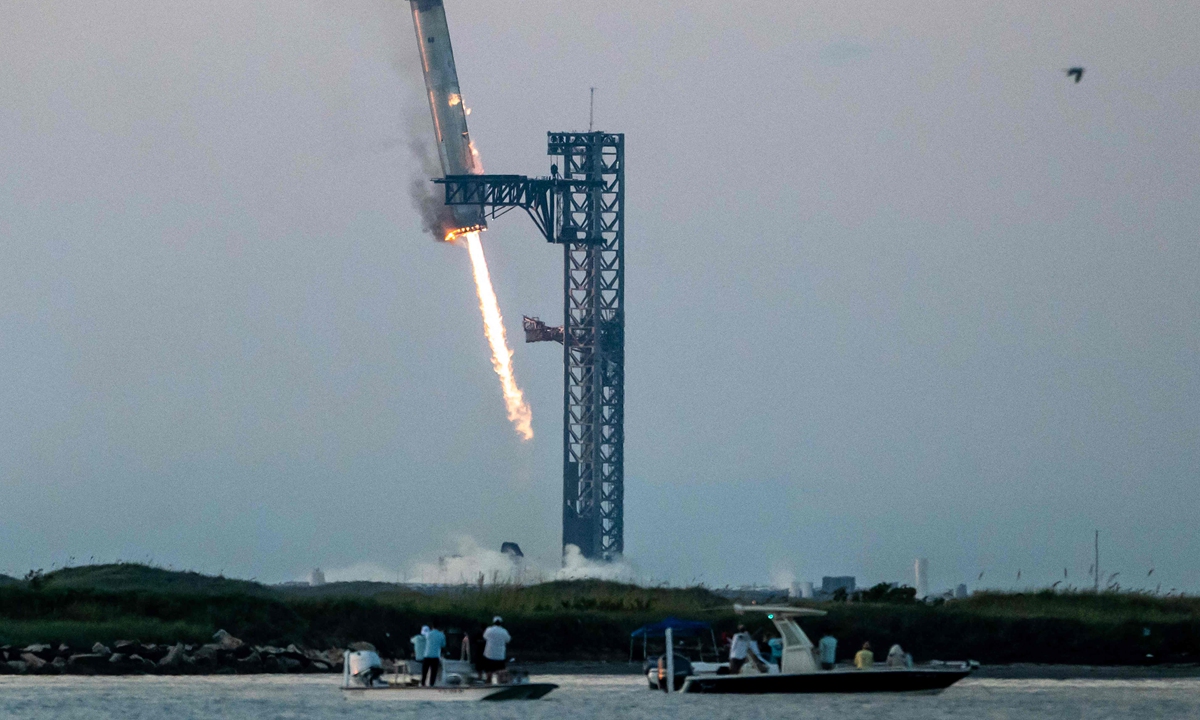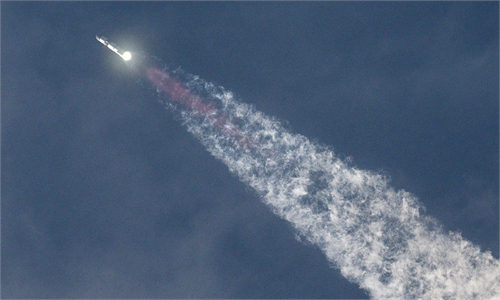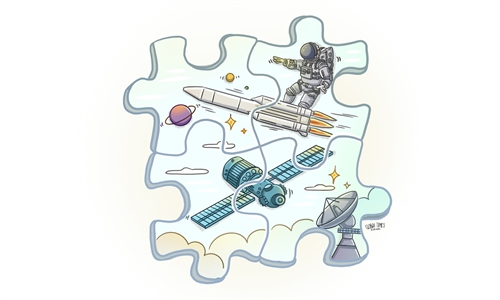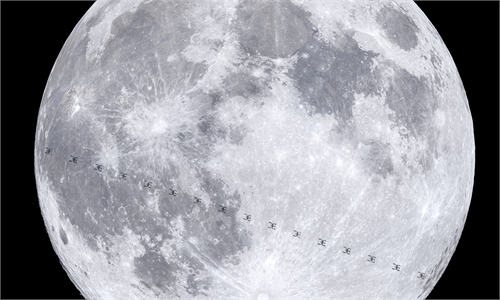SpaceX test flight triggers attention of Chinese enthusiasts
Sticking to nation's own devt path a must: rocket experts

Starship's Super Heavy Booster is grappled at the launch pad in Starbase near Boca Chica, Texas, on October 13, 2024, during the Starship Flight 5 test. Photo: VCG
SpaceX completed the fifth test flight of its giant Starship rocket, marking significant feats, including the successful capture of the rocket's "Super Heavy" booster using mechanical arms, affectionately referred to by many as "chopsticks," on its first attempt. The flight also garnered a lot of attention among Chinese space enthusiasts and industry insiders.
Apart from the booster capture, marking a major milestone toward SpaceX's goal of making Starship a fully reusable rocket system, Starship spacecraft traveled a similar trajectory in space as in its previous flight test, re-entered Earth's atmosphere and splashed down in the Indian Ocean, Xinhua News Agency reported.
Excited by the footage of the Starship test flight, many Chinese netizens posted congratulatory messages online. However, some Chinese space industry insiders contacted by the Global Times shared different perspectives on the achievements.
"The Starship team's greatest strength remains in SpaceX signature first-stage recovery technology pioneered with the Falcon rockets, but the development of the second stage has a long way to go," a Chinese rocket technician who requested not to be named, told the Global Times on Monday.
The deorbit burn has not yet been executed, and critical issues in aerodynamics and heat protection are still unresolved. The heat shields are still falling off, and even the gentlest high-angle balanced glide trajectory caused significant burning, the expert said, and predicted that further delays in the US lunar landing plans are nearly inevitable.
Kang Guohua, professor of Aerospace Engineering at Nanjing University of Aeronautics and Astronautics, told the Global Times that the launch consisted of two key objectives: the rocket recovery and the return of the Starship spacecraft itself, successfully achieving a controlled splashdown in the Indian Ocean. In comparison, China's rocket recovery technology is still in the experimental phase.
When asked whether China should also pursue super heavy rockets like Starship, Kang said that China's space program is not engaged in a "Star Wars"-style space race.
"We have always adhered to a principle of development according to our capabilities, tackling challenges step by step according to scientific laws. We will develop our space technology based on our own capabilities and needs. For instance, our next deep space exploration goals include manned lunar landings, lunar bases, asteroid sampling, and Mars sample return missions."
Currently, the US is more anxious about China potentially achieving a lunar landing before it does. It is they who are worried, not us, he said.




